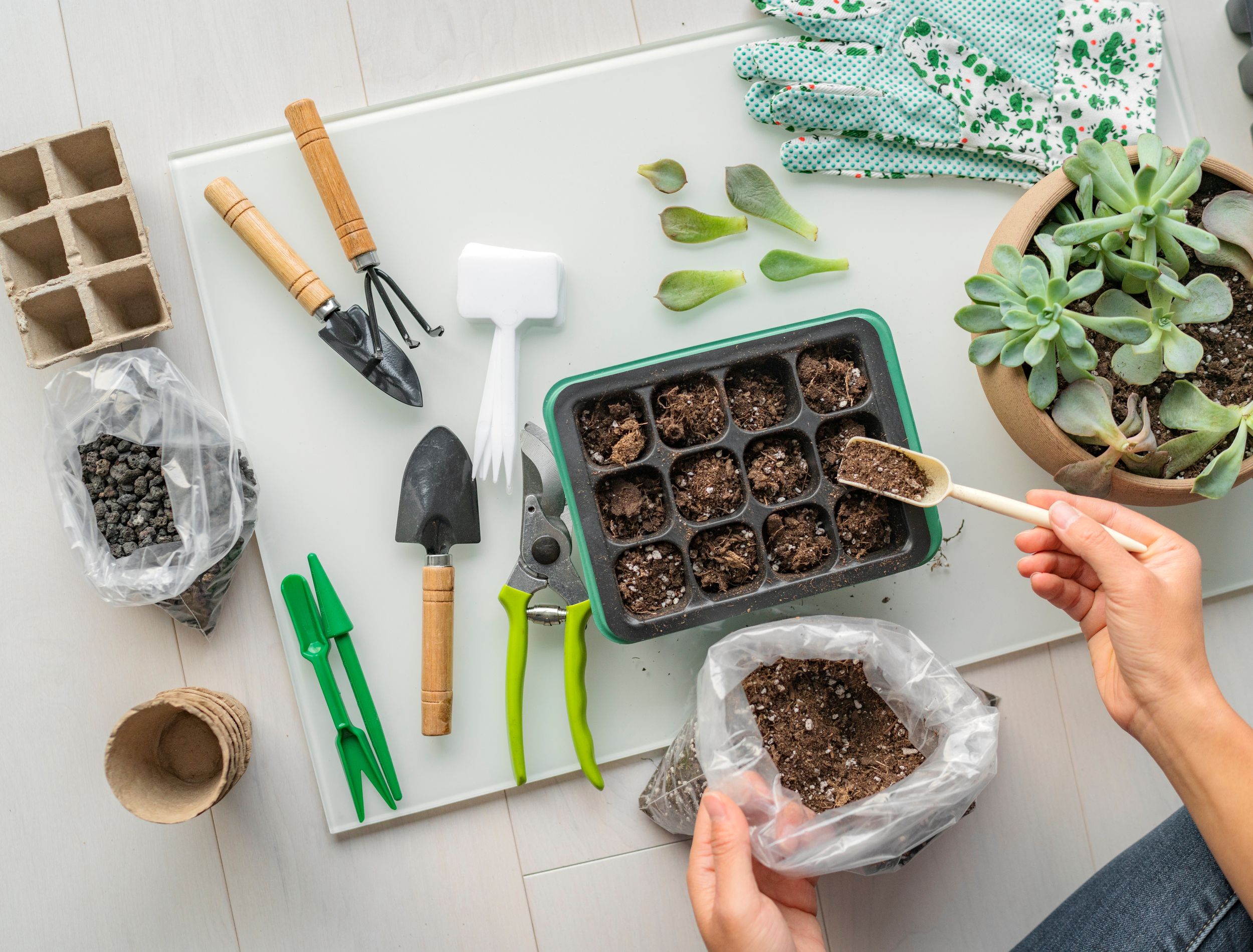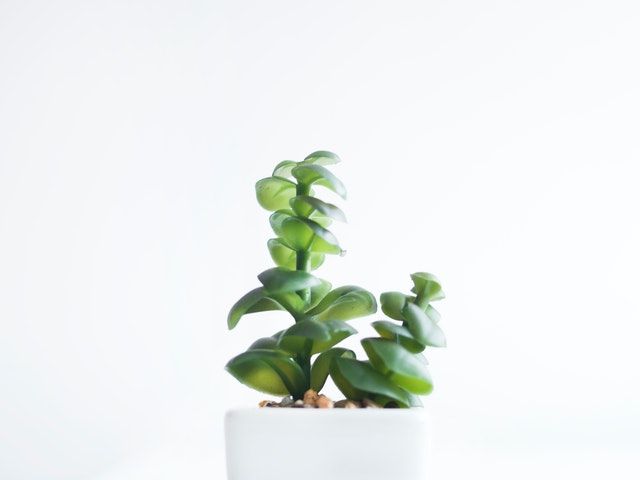Succulents are cute, low-maintenance plants that can easily be grown indoors or outdoors in temperate climates. Their shallow root systems and ability to store water in their fleshy leaves allow them to thrive in dry climates.
Succulents and cacti require a potting medium to provide nutrients while promoting drainage. You can purchase specific succulent and cacti potting soil or create your well-draining mix.
The most economical way to add to your succulent garden is to propagate from plants you already have! Propagation refers to reproducing a baby plant from its parent material. Succulents may be propagated from their leaves, stems, or offsets. The top 4 most common methods for propagation are as follows:
Materials Needed
- Sharp garden shears/clippers
- Garden gloves (for spiny varieties)
- Spray bottle
- Well-draining potting medium for succulents and cacti
- Containers with adequate draining holes
1. Dividing - Root Separation
Image credits: cavanimages via Canva
Root separation may be performed on existing clumps of succulents you wish to separate.
Step One: Unearth
To divide your plant by its roots, gently remove your succulent from the soil it is sitting in.
Step Two: Divide Roots
Carefully tease the roots of your plant apart to separate them into different clumps.
Step Three: Plant
Plant your separated clumps directly into a well-draining succulent and cacti potting medium. If you grow succulents outdoors, make a mound in well-draining, turned soil. Then create a depression for your succulent to sit in with room for root growth. Cover the plant roots with about 1 inch of soil.
Step Four: Care
Wait one full day before watering your succulent bundles. Continue providing your separated plants with proper succulent care, watering only when the soil is dry completely.
2. Dividing - Offset Removal
Image Credits: Dominika Roseclay via Pexels
Similarly to dividing a plant by its roots, an offset or baby plant may be separated for propagation. An offset is a complete daughter plant that has been naturally grown on its mother plant. As they are tiny clones of their parents, offsets have their roots.
In some varieties of succulents, offsets will drop off on their own and take root in the soil.
Step One: Remove Offset
Carefully remove an offset and its roots from the mother plant.
Step Two: Plant
Plant your offset into a well-draining succulent and cacti potting medium. If you grow succulents outdoors, make a mound in well-draining, turned soil. Then create a depression for your succulent to sit in with room for root growth. Cover plant roots with about 1 inch of soil.
Step Four: Care
Wait one full day before watering your individual offsets. Continue providing your separated plants with proper succulent care, watering only when the soil is completely dry.
3. Cutting - Beheading
Image credits: RedThinkHead via Canva
The third method for propagating succulents is perfect for your plants that have grown long, ugly stems beneath their head. Propagate new succulents from both the chopped stem as well as the severed head.
Step One: Locate Where to Cut
Determine what you will use for the "head" of your cut. In some cases, a succulent that has grown leggy has a clear head perched on top of a long stem. Otherwise, locate a cutting spot that will leave at least 1 inch of stem attached to your head.
Step Two: Cleanly Cut
Using sharp shears or clippers, cleanly cut the head of your succulent off the stem.
Step Three: Arrange Your Cutting
The most crucial step in propagating cuttings is letting the cuttings dry out. Place your cuttings in a container on top of some succulent and cacti potting mix. Keep your container facing indirect sunlight.
Step Four: Wait Then Water
Leave your cutting for approximately 3 to 5 days; until the end becomes dry and calluses over. This callus is crucial for protecting the exposed tissue of the plant from bacteria.
At this point, spray your soil until it is moist but not soaking wet. Repeat every 4 to 5 days or when the soil has dried.
In 3 to 4 weeks, you should notice some tiny roots beginning to sprout. Keep the same watering schedule.
Step Five: Plant
Once your cutting has developed roots, plant in a well-draining container containing succulent and cacti potting mix. Gently cover the roots with soil to hold the cutting in place.
Step Six: Care
Wait one full day before watering your severed succulent head. Continue to water when the soil completely dries out.
With proper succulent care, the leftover stem from the parent plant grows new leaf clusters from the leaf holes along its sides. Zero waste!
4. Cutting - Leaf Removal
Image credits: asiantiger247 via Canva
You can also do Propagation by using the leaves of a succulent plant. It is best to try your luck with several leaf cuttings for a better chance of propagation success. You may find some leaf cuttings just shrivel up and die, while others form roots but no leaves.
In some cases, your leaf cutting may skip the roots and go straight to forming new leaves. Be patient! The more you try, the more successful you will be!
Step One: Water Existing Succulent
Water your parent's succulent plant a few days before removing any leaves. This provides the leaves with the moisture they need to propagate.
Step Two: Remove Leaves
Select several bottom leaves that look healthy on your parent plant. Remove a leaf by gently twisting where the leaf meets the stem. Ensure you remove the entire leaf from the stem for propagation success.
Step Three: Arrange Your Cuttings
Place your cuttings in a container on top of some succulent and cacti potting mix. Ensure the leaf ends do not touch the soil. Keep your container facing indirect sunlight.
Step Four: Wait Then Water
Leave your cuttings for approximately 3 to 5 days; until the end becomes dry and calluses over. This callus is crucial for protecting the exposed tissue of the parent leaf from bacteria.
At this point, spray the soil until it is moist but not soaking wet. Repeat every 4 to 5 days or when the soil has dried.
In 3 to 4 weeks, you should notice tiny roots beginning to sprout from the parent leaf. Keep up the same watering schedule.
In 6 to 7 weeks, tiny leaves, also known as "pups," emerge from the parent leaf. They are provided water and nutrients from their parent leaf as it shrivels and dries.
Step Five: Plant
Once your cuttings have developed roots, it is time to transfer them to their own well-draining containers. These should be at least 4 inches in diameter and contain succulent and cacti potting mix. Gently cover the roots with about 1/2 inch of soil to hold the cuttings in place.
Step Six: Care
Wait one full day before watering your baby plants. Continue to water when the soil completely dries out.
The holes created from your leaf removal on the mother plant should regrow new leaves with proper succulent care.
To Conclude
Propagating succulents is an easy and economical way to add to your succulent garden. You may add new clippings to fill out a container garden, decorate a terrarium, or add to your outdoor garden if you live in a temperate climate.
The key to succulent propagation is allowing your cuttings to completely dry out and form roots before planting. It may not happen every time, so play around with your method to find what works best for you. Using this guide, choose the propagation method that works for the type of succulents you already have and have some fun adding new baby plants to your home garden!





